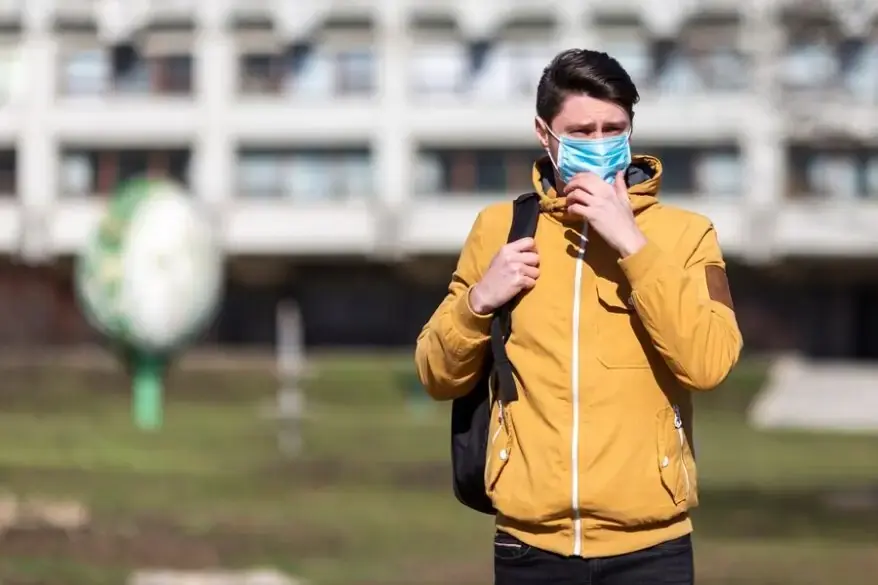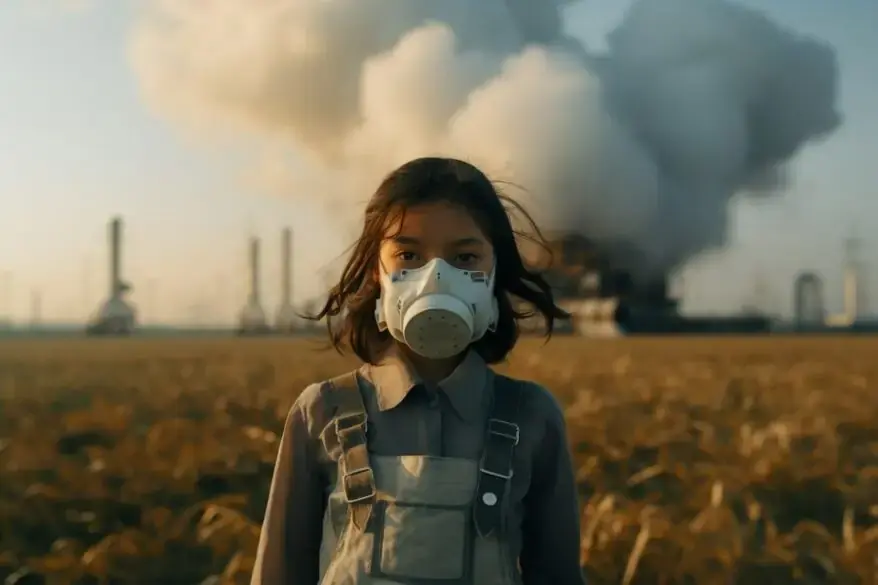Pollution effect on humans and Remediation
Pollution refers to harmful substances entering the environment. These contaminants can hurt living things and the ecosystem. The pollution effect on humans is significant and widespread. It’s a worldwide problem. It impacts our air, water, and the land we inhabit. Understanding the different pollution types is crucial to address and mitigate its impacts effectively.
There are various kinds of pollution, including air, water, land, noise, thermal, radioactive, plastic, and light pollution.
Although each type has its distinct features and specific origins, they all ultimately harm the environment and human health.
Understanding pollution is essential. It helps us find out what causes it and how it affects us. This knowledge lets us create ways to stop and lessen pollution. We can make better choices by knowing where pollution comes from and its effects. Additionally, We can do more to reduce pollution and push for more significant changes.
Air Pollution effect on humans and Prevention
Air pollution occurs when harmful substances contaminate the air, ultimately affecting both human health and the environment. Primarily, air pollution results from burning fossil fuels for energy. Additionally, industrial activities, such as manufacturing and mining, significantly contribute to it. Moreover, transportation emissions and various agricultural practices also play a role in worsening air pollution.
Air pollution harms human health in many ways. It can cause respiratory problems like asthma and lung cancer. It can also lead to heart issues and early death. Besides affecting humans, it damages the environment too.
It harms ecosystems, depletes the ozone layer, and contributes to climate change.
Prevention measures for air pollution include:
- Clean energy sources like solar or wind power should be used instead of fossil fuels.
- Reducing vehicle emissions through improved fuel efficiency, Additionally promoting the use of electric cars.
- Implementing stricter regulations on industrial emissions.
- Promoting sustainable agricultural practices.

Water Pollution effect on humans Control measures
Water pollution occurs when harmful substances or pollutants contaminate water bodies such as rivers, lakes, and oceans. The primary sources of water pollution include agricultural runoff, sewage and wastewater discharge, industrial waste, and oil spills. Water pollution has significant impacts on aquatic life and human health. It can lead to the destruction of ecosystems, loss of biodiversity, and the contamination of drinking water sources.
Polluted water can lead to many health issues. These include stomach problems, skin conditions, and cancer.
Control measures for water pollution include:
- Implementing wastewater treatment systems to remove contaminants before they are discharged into water bodies.
- Reducing the use of chemicals in agriculture and industry.
- Promoting sustainable farming practices that minimize runoff.
- Enforcing stricter regulations on waste disposal.

Land Pollution Effects on humans and Migration strategies
Land pollution refers to the degradation of land resources due to harmful substances or pollutants. The leading causes of land pollution include littering, improper disposal, industrial waste, and deforestation.
Land pollution has widespread effects. It can hurt the environment and human health. It makes soil loose, which leads to erosion. Erosion is when soil is washed or blown away. This also reduces how rich and healthy the soil is. It can pollute the water underground. It also ruins the homes of plants and animals.
Exposure to polluted land can also pose health risks to humans through ingesting or inhaling toxic substances.
Mitigation strategies for land pollution include:
- Promoting recycling and proper waste disposal practices.
- Implementing stricter regulations on industrial waste management.
- Reforestation efforts to restore degraded land.
- Educating the public about the importance of responsible land use.

Noise Pollution Effects on humans Health and environment
Noise pollution is excessive or unwanted sound that can harm both human health and the environment. Primarily, human activities are responsible for causing noise pollution. These activities include transportation noise such as traffic, industrial noise from machinery, and construction noise from ongoing building projects.
Noise pollution impacts human health in various ways. For instance, it can cause hearing loss and tinnitus.
In addition, it can raise stress levels and disrupt sleep patterns. Moreover, prolonged exposure to high levels of noise can lead to cardiovascular problems and impair cognitive function.
Noise pollution in the environment affects animals. It disturbs their behavior. It messes with how they communicate and mate. This can cause some species to decline in numbers.
To prevent noise pollution:
- wear earplugs or use noise-cancelling headphones to protect your ears.
- Lower noise levels with sound barriers or insulation.
- Enforce rules on vehicle and machinery noise.
- Support the use of quieter technologies.

Thermal Pollution Effects on humans and Control measures
Thermal pollution refers to the increased water temperature in natural water bodies due to human activities. For instance, power plants use water to cool machinery, which results in heat being released into the surrounding environment. Additionally, deforestation contributes to this issue by reducing shade and allowing more sunlight to be absorbed. Moreover, urbanization further exacerbates the problem by replacing plants with surfaces that absorb more heat, leading to even higher temperatures in nearby water bodies.
The effects of thermal pollution on aquatic life and water quality are significant. For example, warmer water can disrupt the balance of ecosystems, which may lead to a decline in certain species or even cause them to go extinct. In addition, it can lower dissolved oxygen levels in water, making it more difficult for aquatic organisms to survive.
Furthermore, thermal pollution can diminish water quality by encouraging the growth of harmful algal blooms. As a result, it also compromises the effectiveness of wastewater treatment processes.
Control measures for thermal pollution include:
- Cooling towers or closed-loop cooling systems in power plants can reduce water usage and minimize temperature increases.
- Planting trees and preserving natural vegetation to provide shade and reduce heat absorption.
- Implementing regulations on water discharge temperatures.

Radioactive Pollution effect on humans and Remediation
Radioactive pollution is when harmful radioactive substances are present in the environment. It can damage human health and the environment. Nuclear power plants, nuclear accidents, improper disposal of radioactive waste, and mining activities mainly cause it.
The risks and impacts of radioactive pollution are severe and long-lasting. Exposure to high levels of radiation can cause radiation sickness, cancer, genetic mutations, and even death.
Radioactive pollution can contaminate soil, water, and air. It destroys ecosystems. Over time, radioactive materials build up in the food chain.
Remediation measures for radioactive pollution include:
- Decontamination efforts to remove or reduce the presence of radioactive substances in the environment.
- Proper disposal of radioactive waste in secure facilities.
- The development of advanced technologies for the treatment and storage of materials
Plastic Pollution Effects on humans and solutions
Plastic pollution occurs when plastic waste gradually builds up in the environment. In particular, this is a major problem in oceans and rivers, where plastics accumulate over time. It is primarily caused by the widespread use of single-use plastics, such as plastic bags and bottles. Moreover, improper disposal methods, including careless littering, significantly contribute to this growing environmental issue.
The effects of plastic pollution on marine life and human health are devastating. For instance, aquatic animals can become entangled in plastic debris or mistake it for food, leading to injury or death. Furthermore, plastic waste breaks down into tiny pieces called microplastics, which pose additional risks. Marine animals can ingest these microplastics, which then enter the food chain.
As a result, humans may be exposed to microplastics by eating contaminated seafood or drinking polluted water. Additionally, this exposure is increasingly worrying and might pose significant health risks.
There are ways to tackle plastic pollution:
- We can cut down on plastic use by choosing reusable products.
- Recycling helps lower the amount of plastic that reaches landfills or oceans.
- We need stricter rules on single-use plastics.
- Teaching people about the dangers of plastic pollution is crucial.

Light Pollution effect on humans and Human Health
Light pollution is excessive or misdirected artificial light that interferes with natural darkness and disrupts ecosystems. It is mainly caused by outdoor lighting from streetlights, buildings, and sports facilities.
The impacts of light pollution on wildlife behaviour and human health are significant. Wildlife suffers from too much artificial light.
It messes up their migration, feeding, and mating. This can cause their numbers to drop and decrease biodiversity.
For people, artificial light at night can ruin sleep patterns. Additionally, this can cause sleep problems, tiredness, and a higher chance of getting chronic diseases like obesity and depression.
Prevention measures for light pollution include:
- Using motion sensors or timers to control outdoor lighting.
- Reducing the intensity and duration of artificial light at night.
- Shielded fixtures are used to direct light downward and minimize glare.
- Promoting the use of energy–efficient lighting technologies.
Remediation of Pollution effect on humans and Innovations
Pollution remediation focuses on cleaning up and fixing polluted areas. Its main goal is to reduce or eliminate dangerous substances from the environment. Among the
best methods to clean pollution are natural approaches. For example, phytoremediation uses plants to clean soil or water, while bioremediation relies on tiny organisms to break down pollutants. Additionally, it is crucial to get local communities involved in the cleanup process. This ensures that they not only participate but also take ownership of the efforts. Moreover, establishing plans for long-term monitoring and maintenance is vital, as it helps prevent pollution from recurring in the future.
Innovations in pollution remediation are constantly being developed to address the challenges posed by different types of pollution.
Nanotechnology could help clean water and air. It uses tiny particles to capture and remove pollutants.
Also, high–tech tools like remote sensing and data analytics track pollution. They pinpoint where cleanup is needed most.
Fixing pollution is vital. It repairs damaged ecosystems, keeps us healthy, and ensures a sustainable future. We can significantly reduce pollution by preventing it effectively, adopting sustainable practices, and investing in new solutions. Additionally, this will make the environment cleaner and safer for everyone.

Additionally, to stay updated with the latest developments in STEM research, visit ENTECH Online. Basically, this is our digital magazine for science, technology, engineering, and mathematics. Furthermore, at ENTECH Online, you’ll find a wealth of information.






